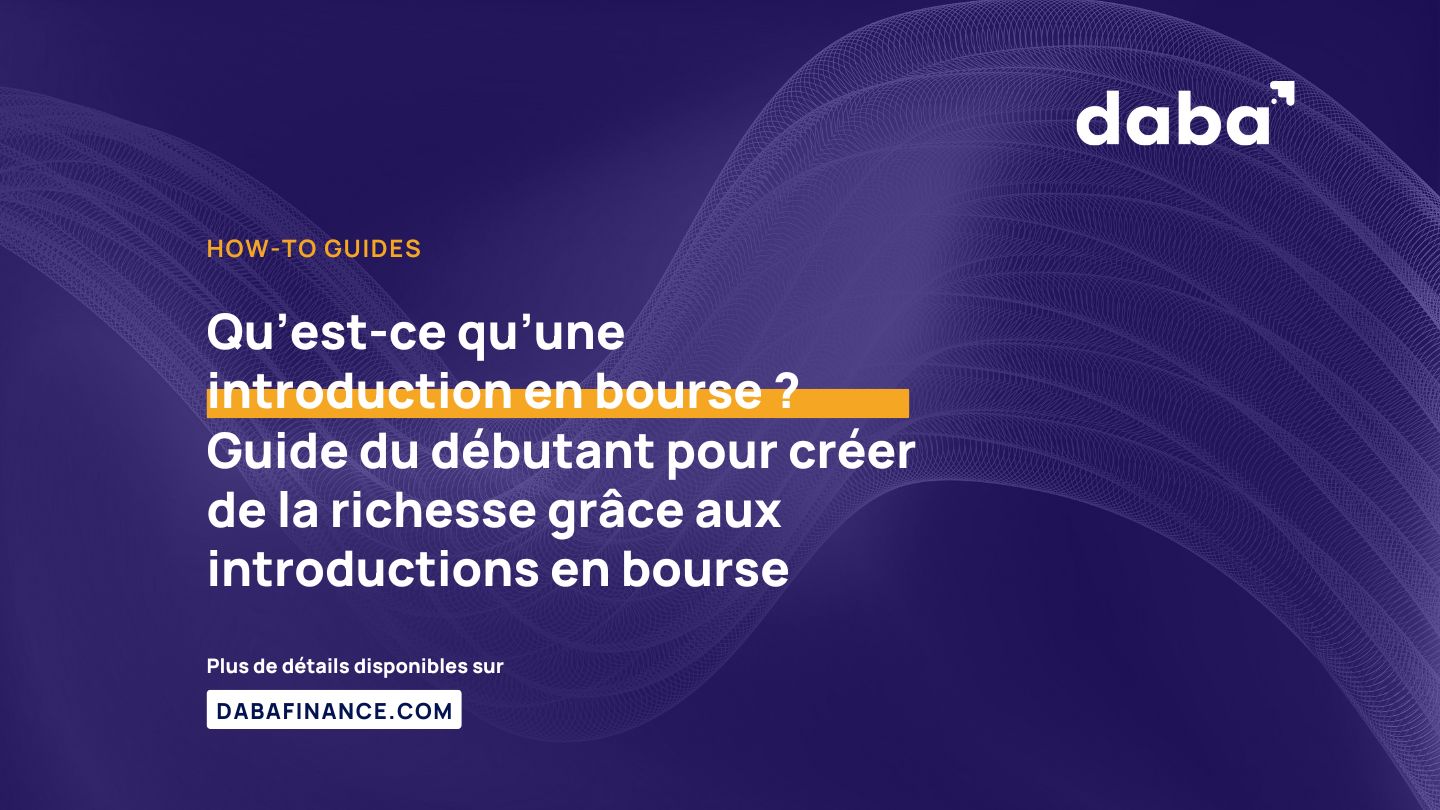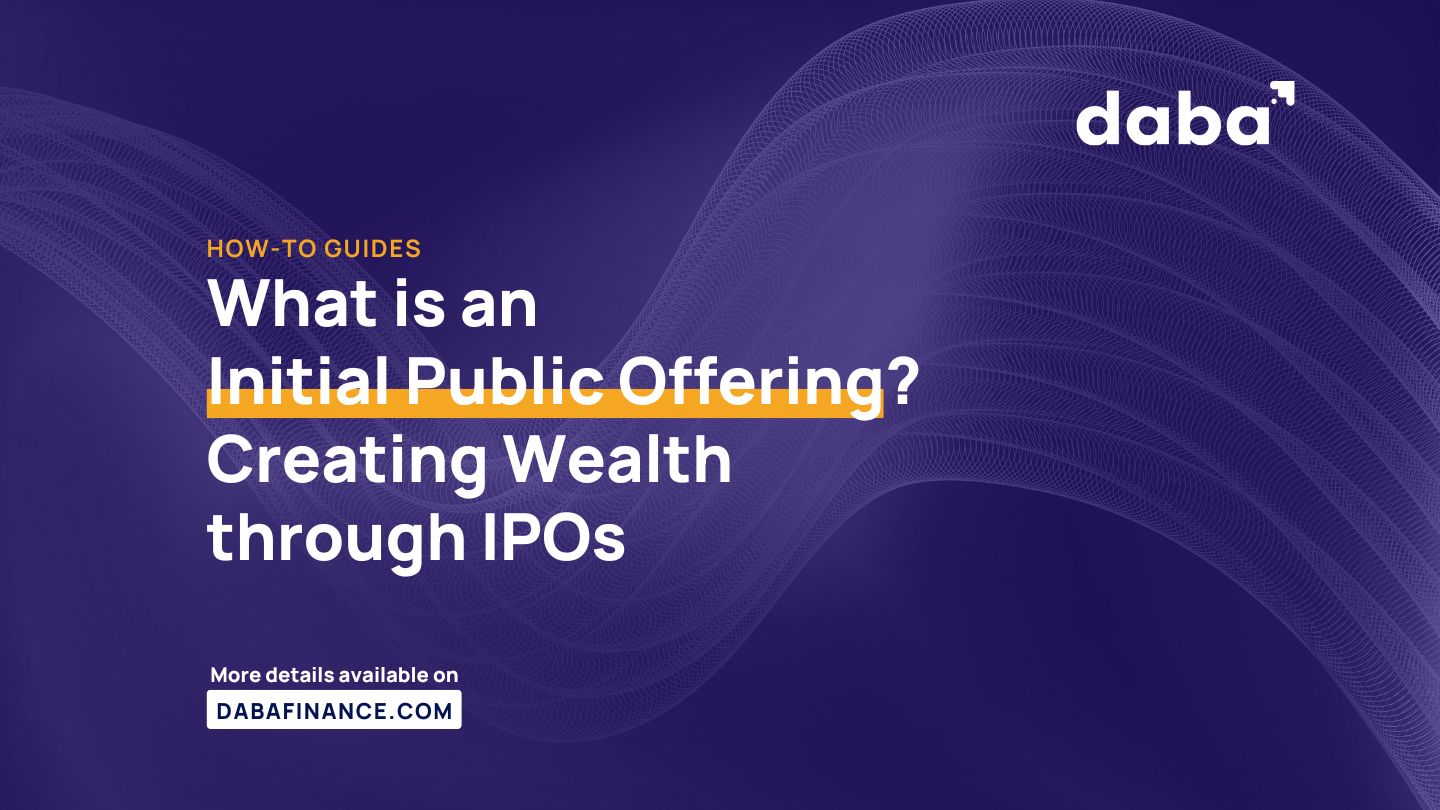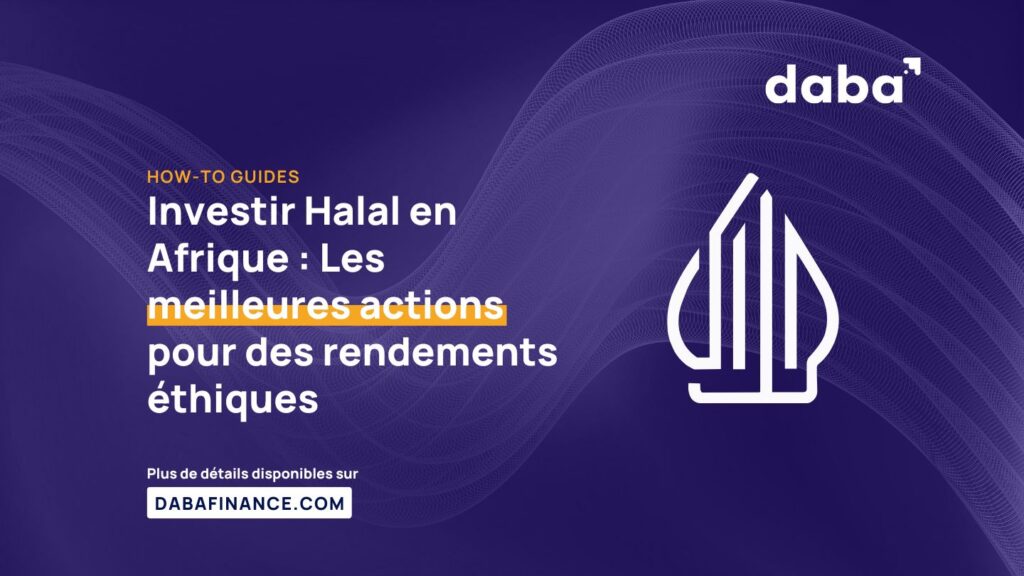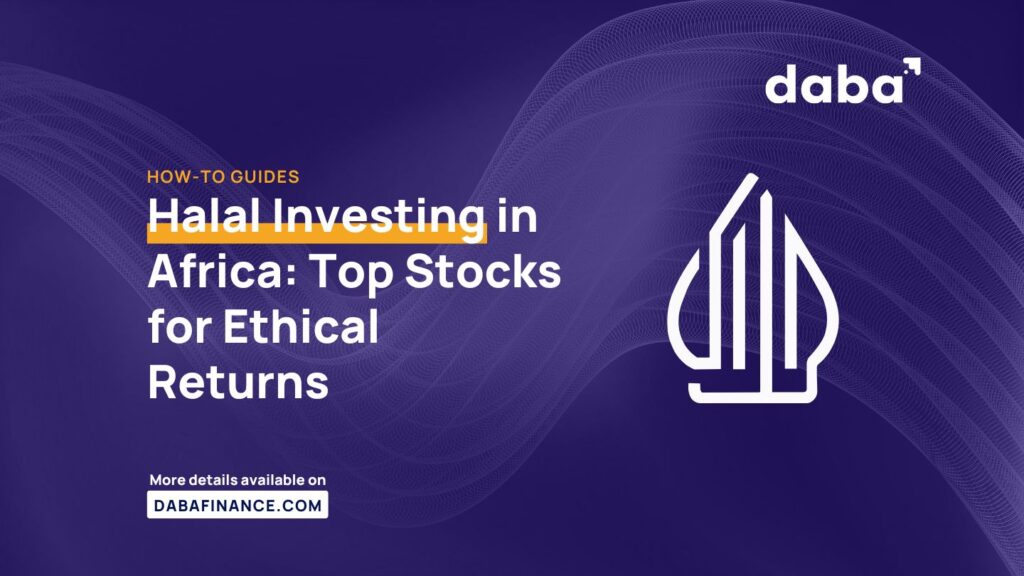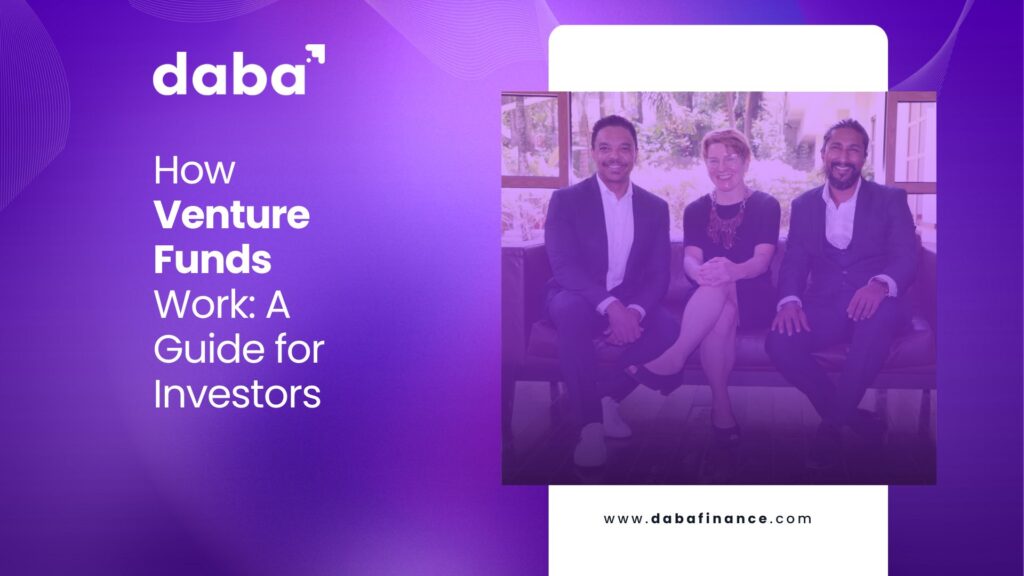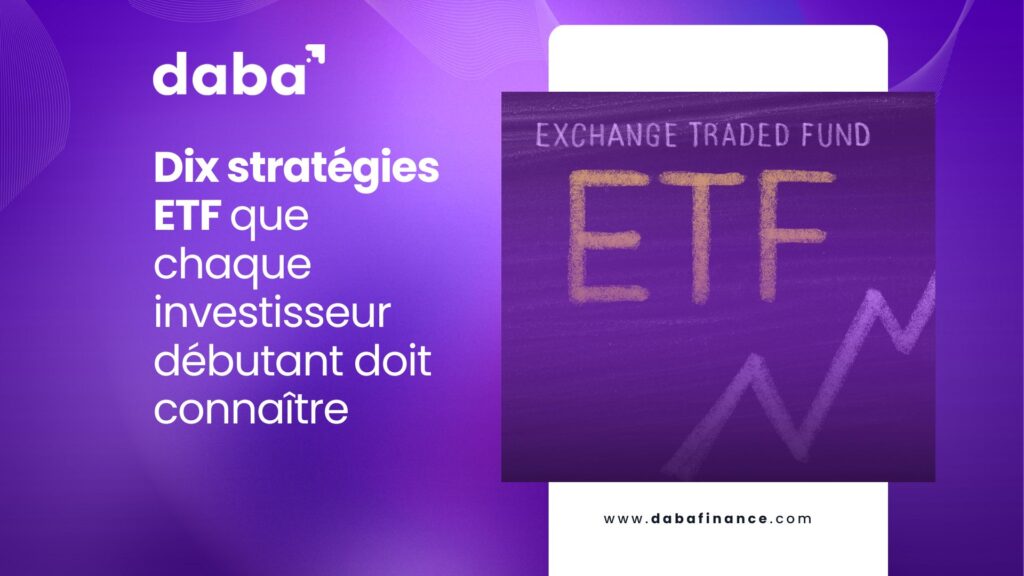Les obligations africaines offrent des rendements élevés et des revenus stables, ce qui les rend attractives aussi bien pour les investisseurs locaux qu’internationaux, et un choix judicieux pour ceux en quête de rendement.
Investir dans les obligations est l’un des moyens les plus stables et prévisibles de faire croître votre patrimoine. Contrairement aux actions, qui peuvent être volatiles, les obligations offrent un revenu fixe et sont considérées comme des investissements à faible risque. Mais comment fonctionnent-elles, en particulier sur le marché primaire, où elles sont émises pour la première fois ?
Dans ce guide, nous vous expliquons étape par étape comment investir dans les obligations via la plateforme de Daba.
Qu’est-ce qu’une obligation ?
Une obligation est un prêt que vous, en tant qu’investisseur, accordez à un gouvernement, une entreprise ou une institution. En échange, l’émetteur s’engage à vous rembourser le capital investi (appelé valeur nominale) à une date précise, tout en vous versant des paiements d’intérêts réguliers (coupons) en guise de compensation.
Pourquoi Investir dans les Obligations Africaines ?
Les obligations africaines offrent des rendements élevés et des revenus stables, ce qui les rend attractives pour les investisseurs locaux et internationaux.
Pour les investisseurs locaux : Des rendements plus élevés que les comptes d’épargne, générant de meilleurs revenus passifs et une stabilité financière.
Pour les investisseurs internationaux : Une diversification à revenu fixe avec des rendements supérieurs à ceux des marchés développés.
Par exemple, les Euro-obligations de la Côte d’Ivoire offrent des rendements de 6 à 9 %, surpassant de nombreuses obligations mondiales tout en garantissant stabilité économique et paiements réguliers.
Avec une croissance soutenue et un intérêt mondial croissant, les obligations africaines sont un choix judicieux pour les investisseurs en quête de rendement.
Marché Primaire vs. Marché Secondaire
Marché primaire : C’est là que les nouvelles obligations sont émises pour la première fois. Les investisseurs les achètent directement auprès de l’émetteur (gouvernement ou entreprise).
Marché secondaire : C’est là que les obligations existantes sont échangées entre investisseurs après leur émission.
Voyons maintenant comment participer à une émission d’obligation étape par étape.
Étape 1 : Émission d’une Obligation (Gouvernementale ou d’Entreprise)
Les obligations sont généralement émises par des gouvernements ou des entreprises ayant besoin de lever des fonds. Les conditions de l’obligation sont définies à l’avance, notamment :
Valeur nominale (Par Value) : Montant que vous récupérerez à l’échéance (ex. 1 000 $).
Taux d’intérêt (Coupon Rate) : Rendement annuel fixe que vous percevrez (ex. 7 % par an).
Date d’échéance (Maturity Date) : Date à laquelle l’émetteur vous remboursera votre investissement initial.
Montant minimum d’investissement : Certaines obligations nécessitent un montant d’achat minimum.
Les gouvernements et les entreprises travaillent souvent avec des banques ou des plateformes d’investissement comme Daba pour vendre ces obligations aux investisseurs.
Étape 2 : Période de Souscription – Les Investisseurs Achètent les Obligations
Lorsqu’une obligation est émise sur le marché primaire, il y a une période de souscription (généralement de quelques semaines) pendant laquelle les investisseurs peuvent passer leurs ordres d’achat.
Sur la plateforme Daba, voici comment cela fonctionne :
Explorer les obligations disponibles – Connectez-vous à Daba et consultez la liste des obligations. Chaque annonce précise le taux d’intérêt, la durée et le montant minimum d’investissement.
Sélectionner une obligation – Choisissez l’obligation qui correspond à vos objectifs d’investissement (obligations d’État pour la stabilité ou obligations d’entreprises pour des rendements plus élevés).
Passer un ordre d’achat – Saisissez le montant que vous souhaitez investir et soumettez votre demande pendant la période de souscription.
Une fois la souscription clôturée, l’émetteur alloue les obligations aux investisseurs.
Étape 3 : Attribution et Règlement des Obligations
Après la période de souscription, l’émetteur finalise la liste des investisseurs et attribue les obligations en fonction de la demande. Si la demande est élevée, vous pourriez recevoir seulement une partie des obligations demandées.
Processus de règlement :
Vous transférez les fonds pour acheter les obligations attribuées.
Les obligations sont enregistrées à votre nom.
L’émetteur confirme la transaction, et votre investissement débute officiellement.
Sur Daba, une fois le règlement effectué, vous verrez les obligations apparaître dans votre portefeuille.
Étape 4 : Réception des Paiements d’Intérêts (Coupons)
Après avoir acheté une obligation, vous commencez à percevoir des paiements d’intérêts réguliers (généralement tous les 6 mois ou une fois par an). Ces paiements sont versés directement sur votre compte Daba, vous assurant un revenu stable.
Étape 5 : Remboursement du Capital à l’Échéance
À la date d’échéance, l’émetteur vous rembourse la valeur nominale de l’obligation.
Si vous avez investi 1 000 $, vous récupérerez 1 000 $ + tous les intérêts perçus sur la période.
À ce stade, vous avez deux options :
Réinvestir dans une nouvelle obligation pour continuer à générer des revenus passifs.
Retirer vos fonds et les utiliser selon vos besoins.
Pourquoi Investir dans les Obligations via Daba ?
Des rendements sûrs et prévisibles : Les obligations offrent un revenu fixe, idéal pour les investisseurs prudents.
Accès aux marchés obligataires africains : Daba permet d’investir facilement dans des obligations gouvernementales et d’entreprises à travers l’Afrique.
Processus simple et intuitif : Daba facilite l’investissement obligataire avec une plateforme fluide où vous pouvez explorer, investir et suivre vos rendements en toute simplicité.
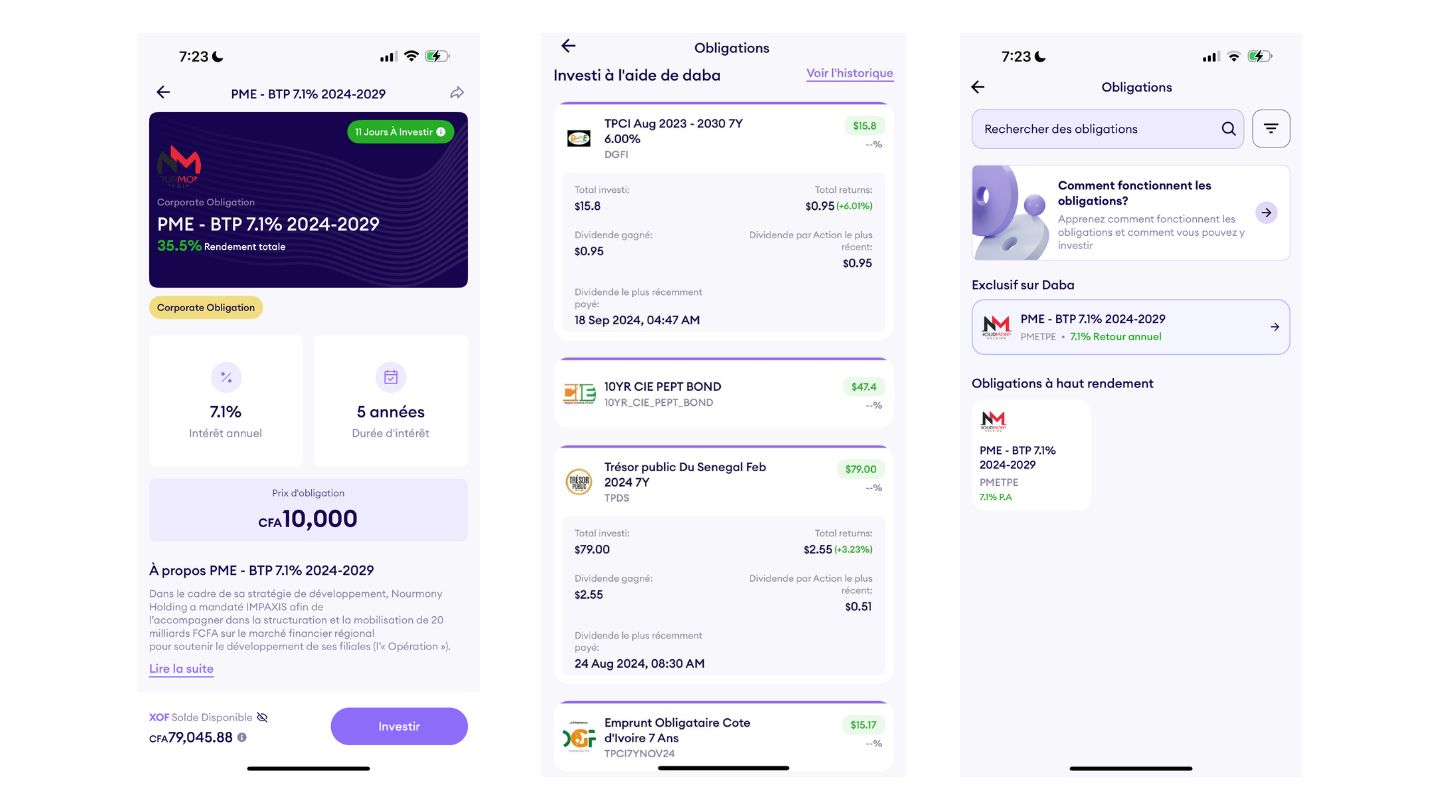
Que se passe-t-il après mon investissement sur Daba ?
Une fois votre investissement réalisé, vous avez deux options :
Conserver l’obligation jusqu’à l’échéance – Vous recevrez des paiements d’intérêts semestriels ou annuels, puis la valeur nominale à l’échéance.
Revendre sur le marché secondaire – Si vous souhaitez récupérer votre capital avant l’échéance, vous pouvez vendre votre obligation sur la plateforme Daba au prix du marché.
Cette flexibilité vous permet de générer un revenu passif ou d’adapter votre portefeuille selon votre stratégie d’investissement.
Conclusion
Investir dans les obligations sur le marché primaire est une méthode simple et efficace pour générer un revenu passif tout en préservant votre capital.
Avec Daba, vous avez accès à un large éventail d’obligations sûres et à haut rendement à travers l’Afrique, le tout sur une seule plateforme.
Prêt à investir ? Inscrivez-vous sur Daba dès aujourd’hui et commencez à faire fructifier votre patrimoine avec les obligations !



